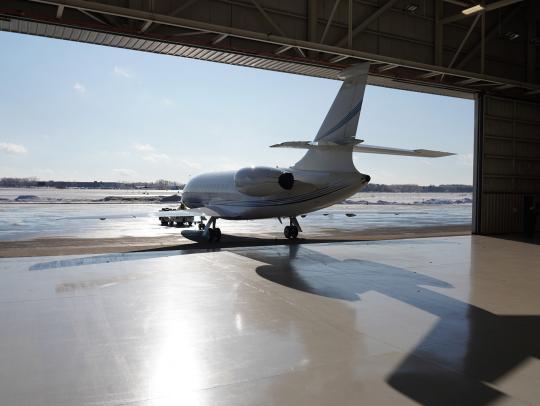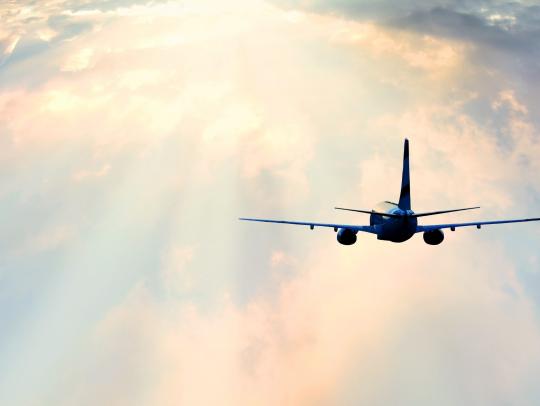Satellite ADS-B takes off with SES Techcom Services and DLR

With three billion flights made in the world annually – an average of 8.2 million people each and every day – the sky has become almost, if not as busy, as some of the most congested roads. The number of planes to keep track of is huge – with safety, environmental efficiency, predictability and reliability, and search and rescue all being important factors to consider.
Until now, this tracking has been done by radar, but from 2020 this method could be enhanced across Europe and America by ADS-B (Automatic Dependent Surveillance – Broadcast). This cooperative surveillance technology determines the position of an aircraft through satellite navigation and a periodic signal which is broadcast from the aircraft, enabling it to be tracked. Air traffic control ground stations receive the information, removing the need for a second radar. As ADS-B is a connectionless broadcast technology, other aircraft are also able to receive the signal to provide situational awareness and allow self-separation.ADS–B is automatic in that it requires no pilot or external input. It is dependent in that it depends on data from the aircraft's navigation system, itprovides surveillance services and is always broadcasting.
The signals which are continuously broadcast by aircraft via ADS-B include several information types, such as the precise aircraft position, which is transmitted every second. The equipment is being introduced on aircrafts as a supplementary data source to the ground-based radar currently used to monitor air traffic and will become mandatory equipment for aircraft from 2020.
Terrestrial radar stations have the problem of their coverage being restricted. The continuous air traffic surveillance stops once aircraft move out of the range of terrestrial radar stations. ADS-B is set to replace radar as the primary tracking technology for aircraft worldwide due to the advantages it offers over radar, which include greater accuracy and consistency.
Due to the fact that it relies on GPS, which allows aircraft to fly closer together in congested airspace, it also broadcasts information about an aircraft’s speed, position and altitude, among others. Tracking from space in this way could close the gap that currently exists due to the lack of continuous air traffic surveillance by terrestrial radar over oceanic airspace or in regions with limited air traffic surveillance infrastructure.
After AF 447 crashed in June 2009 the idea for space-based ADS-B was born by SES Techcom Services and DLR. The two companies joined forces to develop and launch the space-based ADS-B receiver with a data processing ground segment for satellite ADS-B. The project was the joint effort of SES Techcom Services and the DLR Institute of Space Systems, as well as the DLR institute of Flight Guidance. SES Techcom Services developed the data segment along with the Data Processing and Analysis Segment (DPAS), while DLR developed the payload. The European Space Agency (ESA) provided the capability for a trial run in space on-board Proba-V (LEO) satellite.
Forming part of the ESA’s In-orbit Technology Demonstration Program – which exists to give early flight access to the most promising innovations – the Ground Segment and Data Processing Center provides ADS-B position reports on a global basis on non-radar airspace to:
- ANSP for Air Traffic Surveillance
- Airliners for route optimization, fuel consumption reduction and asset management
- Administration and Government for search and rescue
After more than one year in operation, the demonstrator has captured 165 million Mode-S traffic data and was able to decode 30 million positions between July 2013 and April 2015.
SES Techcom Services has confirmed that the operation has been a success, with the DPAS deployed, functional and able to process air traffic worldwide. It was demonstrated that the mission can receive ADS-B signals from space very effectively and is providing statistical and analytical results determinant for the design of a global space-based aircraft monitoring solution.
The benefits satellite-based ADS-B brings can be applied in various areas, as the data can be used to improve security and safety – including faster and more accurate search and rescue efforts for airspace not covered by ground-based surveillance. It also contributes to improved air traffic management capabilities such as situational awareness, conflict detection and reaction/resolution time. Furthermore, it allows routes to be changed to accommodate weather conditions and more efficient flight trajectories in non-radar airspace, where the space separating planes can be decreased, boosting overall traffic capacity while cutting fuel consumption and carbon dioxide emissions.
Gerhard Bethscheider, Managing Director of SES Techcom Services, explained:"The successful demonstration of space-based ADS-B is part of SES Techcom Services' strategic initiative to drive innovation in space and broadcasting technologies. The successful tracking of aircraft shows space-based ADS-B to be an advantageous alternative to using terrestrial infrastructure which should be pursued further.”
The quality of analysis and processes will be developed further to shape new technologies and to enhance the quality of signal acquisition for air traffic tracking, surveillance to optimize routes and search and rescue missions. With so many advantages, satellite-based ADS-B could become a game changer for the air industry.
This article has been published on the ESA website

